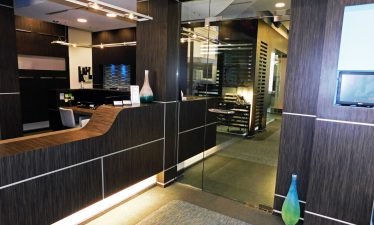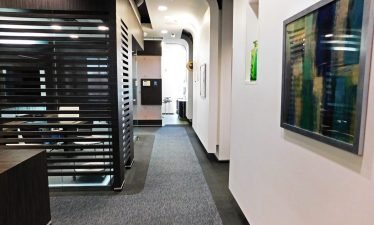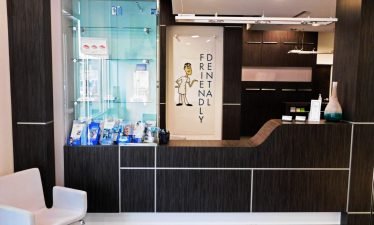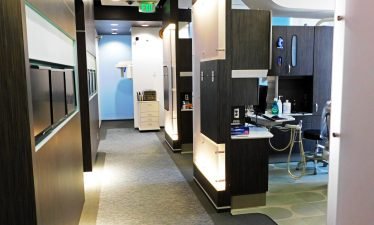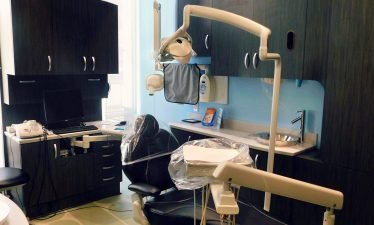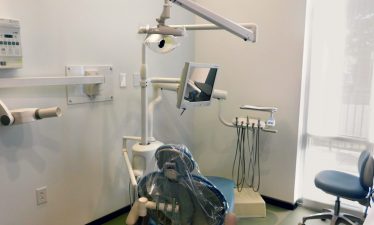Advanced Orthodontics in North & South Carolina
As children grow up, some of them may have jaws and teeth that do not align properly. This may lead to bad bites that may cause oral infections if not treated on time. Orthodontics is a branch of dentistry that treats such teeth irregularities. It helps such children tap in to the benefits of well-aligned teeth, such as clearer speech, a pleasant smile, easier cleaning and a better oral hygiene. Orthodontics will not only enhance your health but will also boost your appearance. It is a great investment in your dental and physical well-being.
What is Orthodontics?
Orthodontics is the treatment of teeth irregularities, mis-alignment and malocclusion. Orthodontics basically corrects teeth and jaws that are improperly positioned. It also includes treating various defects in the facial growth especially the jaw development. The specialist who deals with orthodontics is called an orthodontist.
What’s the Difference Between an Orthodontist and a Dentist?
Orthodontists and dentists work towards improving your oral health. However, there is a big difference between an orthodontist and a dentist. While dentistry is a broad field that deals with teeth, gum, nerves, and jaw conditions, orthodontics is a narrow field within dentistry that specializes in treating misalignment of teeth. For a dentist to become an orthodontist he/she may need additional schooling and certification.
Benefits of Orthodontic Treatment
An orthodontist uses his/her expertise to make sure your teeth are aligned properly. There are various benefits that you will reap by visiting an orthodontist:
- Wide gaps between the teeth will be closed
- The tips of the teeth will be well aligned enabling you to have a proper bite
- Crooked teeth will be straightened
- Speech will come out clear
- Improvement in health of your gums and teeth
- Prevent excessive wear or trauma of the teeth
How do you know if you are a Candidate for Orthodontics?
To know whether you are a candidate for orthodontics, you need to visit us. We will be able to examine and determine whether you will benefit from this type of procedure. We will study your dental health history; get plaster models and X-rays of your teeth before recommending you for orthodontics.
However, if you have the following conditions, you may need to see one of our orthodontists immediately:
- Overbite – where your upper front teeth stick out over the lower teeth.
- Underbite – where your lower teeth are too far forward than the upper teeth.
- Crossbite – where your upper teeth do not position themselves properly when biting.
- Open bite – where there is space between the biting surfaces of your teeth.
- Misplaced midline – where your upper front teeth does not line up with your lower front teeth.
- Spacing – If you have gaps between teeth.
- Crowding – where you have too many teeth to be accommodated by the dental ridge.
How Does Orthodontic Treatment Work?
An orthodontist uses different types of appliances, both fixed and removable to align your teeth, and jaws. Using these appliances gentle pressure is applied on the teeth and jaws hence aligning them.
Types of Orthodontic Appliances
There are two types of orthodontic appliances: fixed appliances and removable appliances.
Fixed appliances – The most common devices used in orthodontics. They are used when precision is important.
Examples of fixed orthodontic appliances include:
- Braces: Consisting of brackets which are connected to the front teeth and and bands serve as anchors for the appliance, while brackets are usually connected to the front of the teeth.
- Invisalign: An alternative to braces is Invisalign. Invisalign is a system of straightening teeth using a series of trays, called aligners. Each tray is custom made to the patients mouth, and there is a specific timeframe in which the trays are changed from one in the series to the next.
Fixed space maintainers – This appliance is used to fill the space left when a child loses a milk tooth. It stops the bordering teeth from moving into the space until the adult tooth develops. A band and a wire are used to preserve the space.
Special fixed appliances – These are special appliances that control thumb sucking and tongue thrusting. You may find them uncomfortable to use especially during meals. Use them as a last alternative.
Removable Appliances
Removable appliances are used for treating minor problems. They are mostly removed when cleaning, eating or during a strenuous activity such as sports.
Examples of removable appliances include:
- Aligners – they align teeth in the same way that fixed appliances work.
- Headgear – there help slow down upper jaw growth, and keep the back teeth in position while the front ones are pulled back.
- Lip and cheek bumpers – they function to reduce effects of pressure from the cheeks or lips.
- Palatal expander – It is a plastic plate that fits over the roof of the mouth. This appliances helps widen the upper jaw.
- Removable retainers – they prevent teeth from moving back to their previous positions. They are worn on the mouth roof.
- Removable space maintainers – these appliances function the same way as fixed space maintainers. They have wire branches that maintain the space after a tooth is extracted.
- Splints (jaw-repositioning-appliances) – they are mainly used to treat TMJ disorders. Splints help the jaw to close properly and are worn on the top or lower jaw.
What should you expect after orthodontic treatment?
Although the patient can eat normally with fixed appliances, some foods and drinks need to be avoided, such as carbonated drinks, hard sweets, or toffee. People who participate in contact sports need to tell their orthodontist, so that special gum shields can be made.
When can Orthodontic Treatment Start?
It is recommended that treatment should commence after your child develops adult teeth. An average starting age of 13 years will be appropriate. However, if problems become noticeable later, start your treatment immediately. If your child has a cleft lip you may need to seek orthodontic treatment immediately.
Overview
Crooked teeth and misaligned teeth are quite difficult to clean, are at risk of being extracted due to tooth decay, and cause extra stress while biting. If you have crooked teeth or misaligned teeth, Friendly Dental Group is here for you. We have a team of experienced and certified orthodontists who will treat your misaligned teeth to precision.
Book an appointment with us today!



